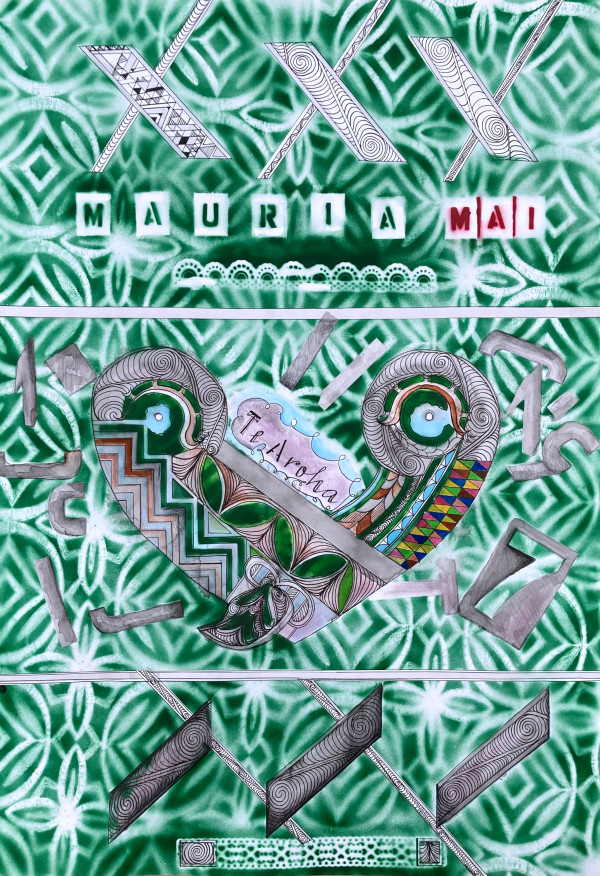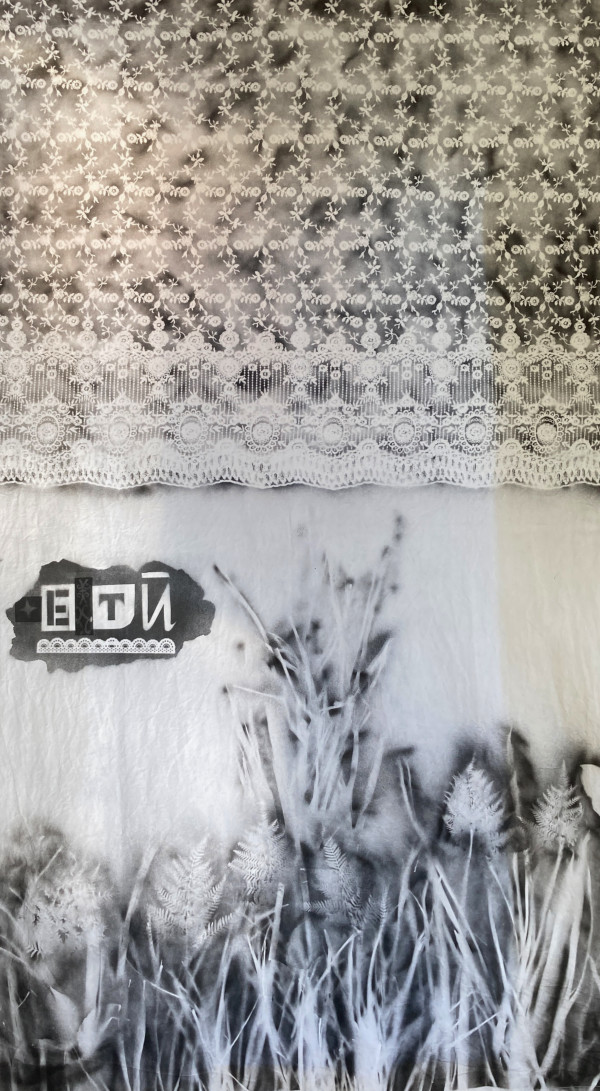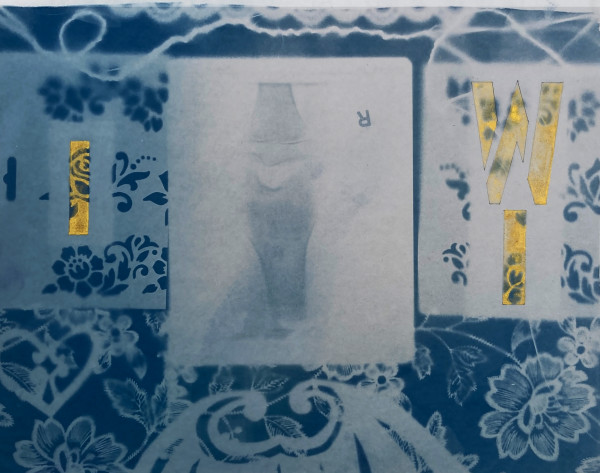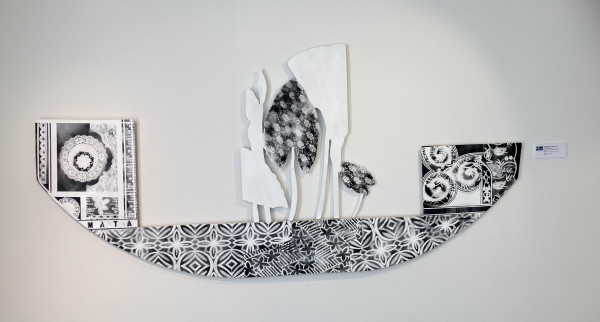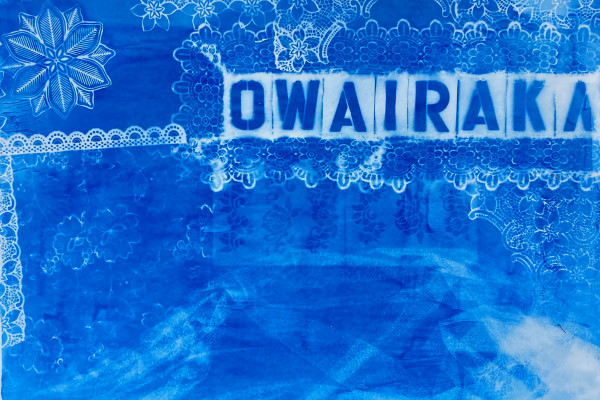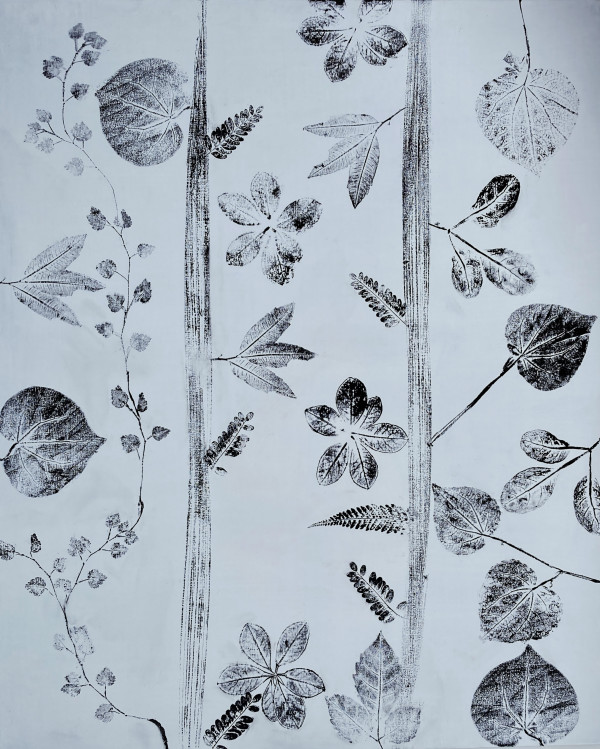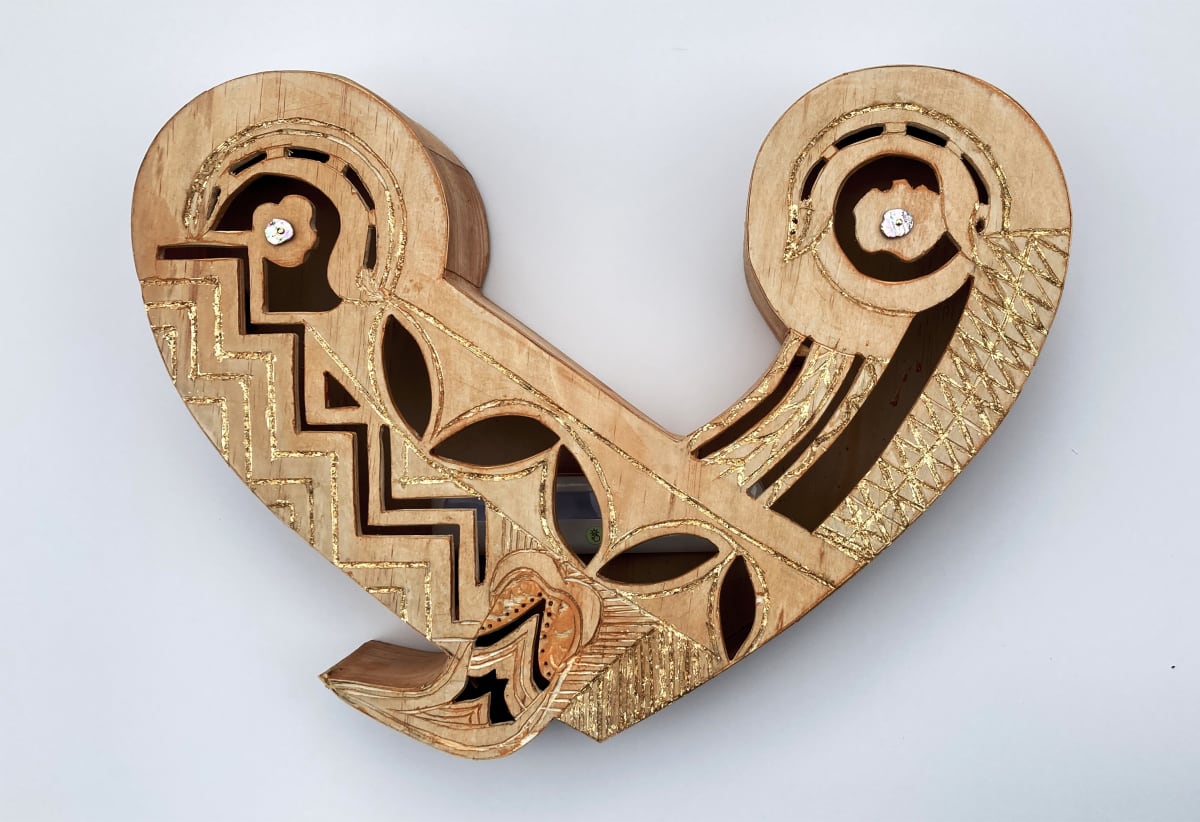
This ngākau is a recurring motif in my work. I regularly observed the symbol in the work of senior Māori artist Paratene Te Mokopurongo Matchitt (my MA thesis topic) and began working with it myself in 2010. It is a part of earlier works entitled 'Āku Maunga Haere' which featured both waka and heart symbols and the latter features on the cover of my 2015 publication MAORI ART.
I use the motif over the maunga to denote the sense of attachment and belonging humans feel towards Maunga Ōwairaka. These are heartfelt feelings and, in relation to Auckland maunga, they appear to be widespread. I remember visiting Maungawhau when its single Monterey pine was finally being purposefully removed by Council from the summit. One sensed a genuine pathos amongst the many Aucklanders milling, perhaps moping, around the slopes picking up tokens of the tree to which they had quite obviously attached such personal identity. Trees, plants, mountains, natural forms in the Tāmaki district matter and they personify human attachment, belonging and local identity. If one understands these connections then one can glimpse also the importance of plants in Polynesian and Pacific thinking. There is a love of the land, of the soil and of the abundance that it provides and the wonder of a whakapapa that does not distinguish between the natural and the human world.
- Subject Matter: Maori Art



